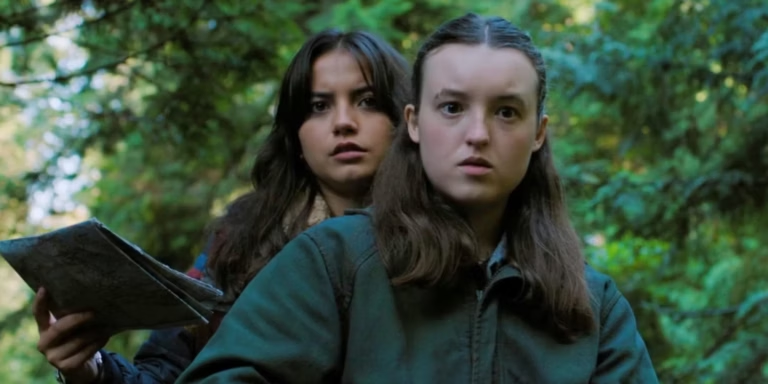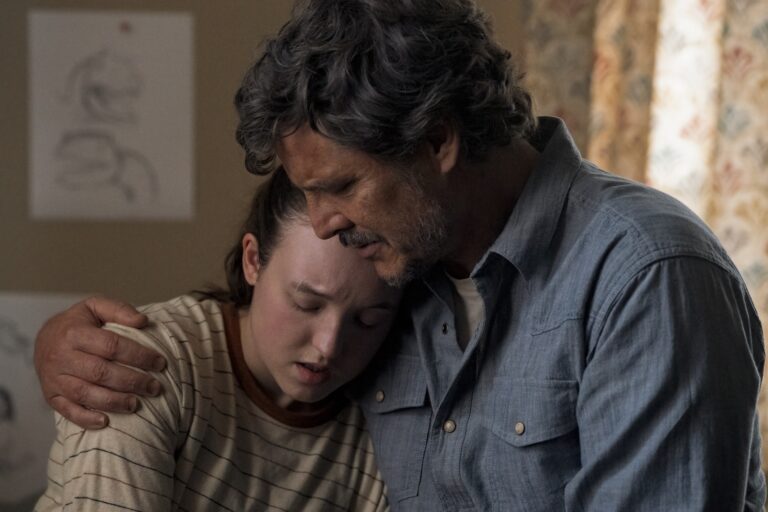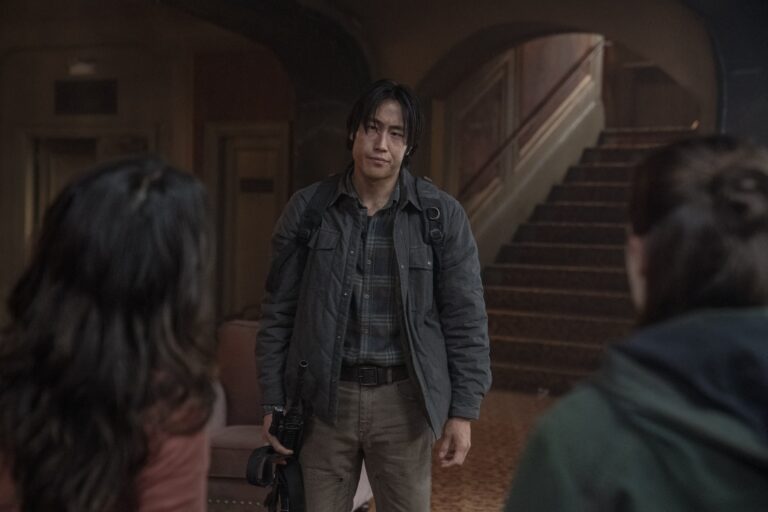Who knew one swing of a golf club could set Twitter on fire and turn a fandom upside down? Well, “The Last of Us” did just that with its season two finale. In a gut-punch moment, Joel meets his end while Ellie’s face hardens into a mask of revenge. When those credits rolled, all you could hear was Abby’s ragged breathing — plus, maybe, 2.4 million frantic tweets in a single day, most under #JoelDeservedBetter. Talk about a franchise-splitting twist.
Yet here we are, not just talking about Abby Anderson, but prepping to follow her every move next season. If you’re feeling whiplash, you’re not alone. But HBO wants you to drop the torches and maybe — just maybe — pick up a little empathy for the woman who shattered our expectations (and favorite smuggler).
Who Smashes a Hero? The Finale Heard ‘Round the Internet
The writers promised us heartbreak, but did anyone expect this? The finale yanked away everyone’s comfort character. Joel was more than a protagonist; he was this show’s moral anchor, warts and all. As Craig Mazin grinned to Variety, “We just took away the audience’s safety blanket. Now we’ll hand them the person who did it and say ‘Love her.’ That’s the trick.”
That’s… quite a bet.
Think about the numbers. Over 11 million fans streamed the finale on its first day (Nielsen says a 13% bump from last year). And HBO greenlit season three within days, uncowed by retweets or the wild petitions. They’re handing Abby the narrative mic for eight whole episodes, a fact confirmed by their own press release in July.
Why HBO Bet the Farm on a Divisive Character
You can almost hear Neil Druckmann’s nerves crackling when you read his interview with the Washington Post. He figured the network would balk at an Abby-centered season, but nope. HBO never blinked. That kind of creative trust doesn’t come easy in Hollywood, especially when internet petitions start spiking. But the numbers, as always, talk louder than nerves.
That wild viewership surge — paired with game sales for “The Last of Us Part II Remaster” rocketing to five million post-finale — gives HBO reason to believe that risk is good business. People want to see a story they might hate. Or, maybe, might secretly love.
Building Empathy Brick by Bloody Brick
So, how exactly do you get a crowd — who just watched their pseudo-dad die in slo-mo — to care about his killer? That’s the million-dollar question, and showrunners claim they’ve got answers.
Neil Druckmann spells it out: “Proximity breeds sympathy.” Makes sense. If we see Abby’s day-to-day, her scars and her fears, she morphs from villain to human. And as Kaitlyn Dever (Abby herself!) says, “Grief is grief; once you feel hers, moral math gets fuzzy.” You can’t out-logic heartbreak, and you sure can’t ignore it.
The writers’ room, never content to just follow old game scripts, plans to clue viewers into Abby’s world from the jump. The season opener flashes all the way back — six years before Salt Lake — to show little Abby watching her surgeon dad in action. His compassion becomes her moral north star. When we finally loop back to recent chaos, we’ll witness familiar events through Abby’s haunted eyes.
They’re not stopping with flashbacks. Episode 305, for instance, ditches the guns for a Seattle aquarium bottle episode. Expect minimal violence, maximum awkward bonding with Lev. “No audience whiplash like LOST days,” Mazin laughs, promising a more careful, granular transition than any old TV plot switcheroo.
Casting, Muscles, and the Myth of ‘Game Accuracy’
Now, can Kaitlyn Dever sell Abby’s fire? Based on the nerdy details, it sure looks like it. IGN’s May photo drop sparked loud debate about muscle mass and “accuracy.” Yet showrunners leaned into authenticity over caricature.
Here’s what we know:
- Dever hit the gym, gaining 15 pounds of muscle under coach Matthew Mullins.
- She trained with voice pros to capture Abby’s in-game cadence.
- The show ditched any “muscle suit” rumors. Abby will look like a real woman — fierce, but believable.
Then there’s Lev. Kaimana Lau, a non-binary Hawaiian actor, wrapped filming with Dever by late spring. Their chemistry will become another beating heart of the story. Watch for this dynamic — surrogate siblings, clinging to each other on a battlefield.
And for the music nerds: Gustavo Santaolalla’s “tremolo basses” motif (teased on Instagram) promises a new sonic identity for Abby. Nothing like doom chords to stir a little dread — and maybe a little hope.
Social Media’s Civil War
Here’s where things get thorny. This fandom? It splits, hard. Just look at the data.
- Change.org’s “keep Abby villain” petition grabbed 67,000 signatures in week one.
- Yet TikTok’s softer side churned out 8.3 million likes for edits positioning Abby as an “enemy turned lover” type.
- #AbbyWasRight trended after Dever’s Vanity Fair spread, and data trackers at Brandwatch saw sentiment shift from a grumpy 31% approval at season two’s start to a surprisingly sunny 52% after the finale.
People might boo, but they can also forgive. Or at least, get obsessed enough to Google “Abby Anderson workout” at three times the regular rate. (Thanks, Men’s Health for confirming the workout was legit.)
Lessons from Lannister, Vader, and Other Rehabilitated Rogues
This move isn’t new territory — just tricky. Remember Jaime Lannister? Started as the worst, ended up making us sob. Vader? Hated, then redeemed. TV and film love to play with our feelings. The trick is pacing and honesty.
But “The Last of Us” twists the knife by speeding up this process. They’ve got only eight episodes to pull us in, flip us around, and get us rooting for someone we all thought we hated. Compare that to, say, Lexa in “The 100.” There, abrupt swaps left fans reeling. Here, the crew has a plan — and some serious stakes.
One wild card: gender politics. Female antiheroes tend to get less leeway than men (props to TIME for calling that out this spring). If anyone’s going to break new ground, it might just be Abby, and fans are watching with arms crossed and popcorn ready.
Where Season 3 Could Trip – or Stick the Landing
Let’s not kid ourselves. This pivot is a high-wire act. If writing gets lazy, Abby will flatten into a cliché — just another baddie “with pain.” But done right, her journey mirrors Ellie’s spiral. They’re two sides of that brilliant, brutal coin. One craves revenge. The other, forgiveness. Both haunted, human, and a bit dangerous.
Pacing is everything. HBO can’t let things drag with too much flashback or cheap drama. Critics are already buzzing — Ben Travers called it “TV’s riskiest move since The Leftovers S2,” and Emily VanDerWerff insists today’s viewers, thanks to “Succession” and the like, are game for deeper moral gymnastics.
So: the plan is to build empathy using small moments — Abby’s trembling hands, a childhood memory with Jerry, tearful talks with Lev. The audience won’t be forced to like her outright. But if the writers stick the landing, you’ll feel for her, no matter what your head says.
Eyeing Redemption: Where We Go From Here
We’re staring at the biggest swing in prestige TV since Tony Soprano needed a shrink. If it works, we’ll all have to question our knee-jerk loyalties. Maybe rooting for Ellie was easy when she wanted justice, and hating Abby felt safe the week Joel died. But come spring 2026, the same fandom scouring for leaks and dropping memes will probably end up asking new questions. Like, “Do I really understand what makes a hero, or do I just love my comfort zones?”
Abby won’t ask for forgiveness next season. She’ll ask you to see her, scars and all. And maybe — if TV magic actually works — you’ll drop that torch and watch the world from her side of the battlefield, just for a while.
One thing’s certain: empathy might just be this show’s grittiest special effect yet. Don’t blink.




